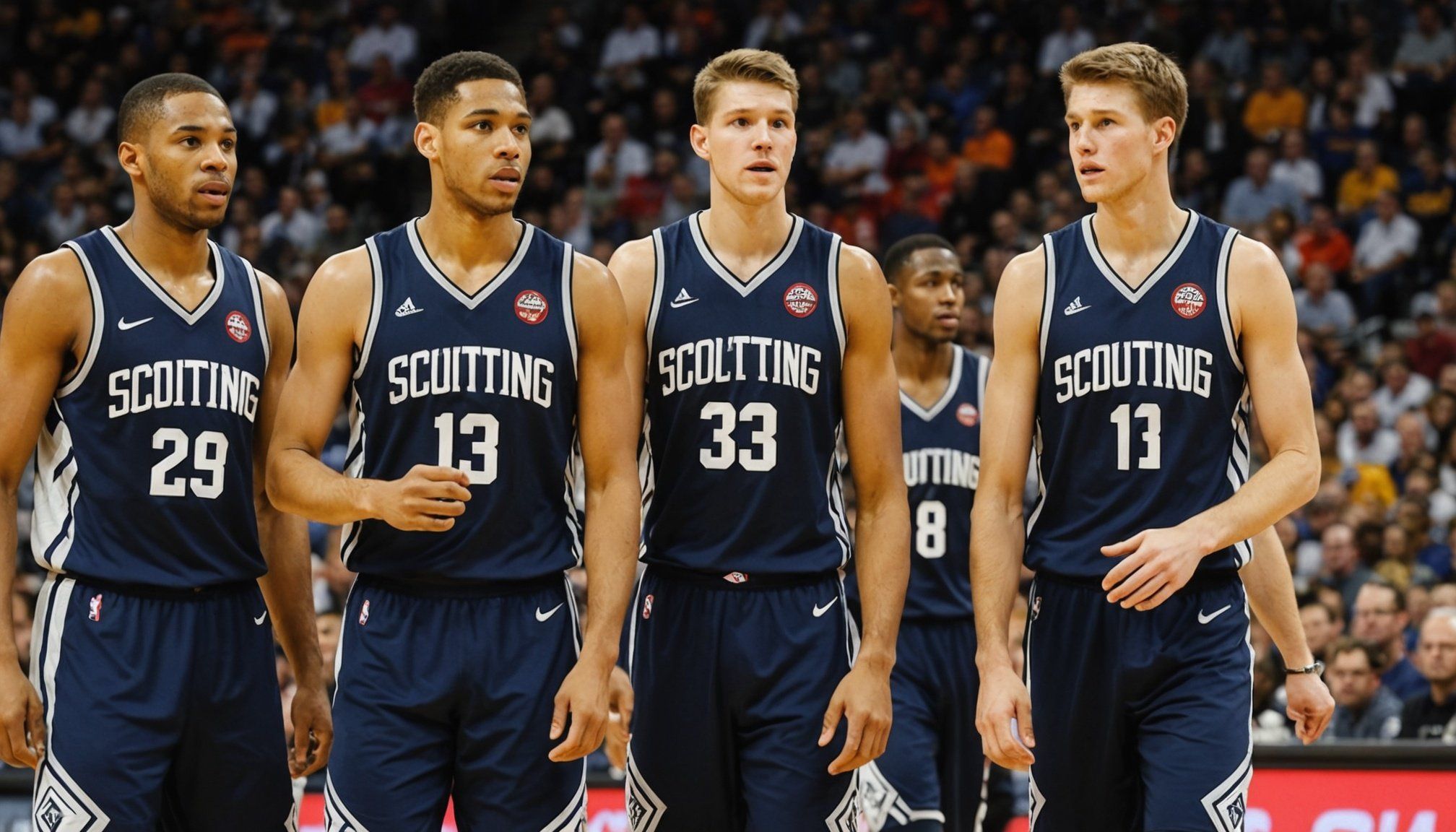In the fast-paced world of basketball, where every second counts and strategies evolve with the blink of an eye, a well-prepared team can make all the difference between victory and defeat. As coaches and players navigate through the season, they often rely on one critical tool to gain the competitive edge: scouting reports. But what exactly are these reports, and how do they influence a team’s performance on the court? Through an exploration of the art and science of basketball scouting, we delve into the ways these reports can enhance a team’s game plan, improve defensive and **offensive **strategies, and ultimately lead to success. Join us as we unpack the instrumental role that scouting plays in shaping a well-coordinated and cohesive team.
The Role of Scouting in Basketball
Basketball is more than just a game of skill; it thrives on strategy, foresight, and adaptability. Scouting reports form the backbone of effective game plans by providing valuable insights into not only the opposing teams but also one’s own team dynamics. These reports are meticulously crafted documents that highlight player tendencies, team strengths, and potential weaknesses. Coaches and players alike rely on these insights to tailor their approach, allowing for a more proactive response during a game.
In parallel : How can youth basketball programs foster inclusivity and diversity?
The essence of basketball scouting lies in its ability to transform data into actionable strategies. By analyzing past performances, observing player habits, and understanding team formations, scouts can predict possible scenarios that may unfold during a match. These predictions become crucial in shaping how a team prepares, allocating time effectively to focus on skills that need refinement, and exploiting opponent vulnerabilities.
Moreover, scouting reports play a critical role in bridging communication between coaches and players. They serve as a comprehensive guide that everyone on the team can refer to, ensuring a unified understanding of what needs to be done to secure a win. In a sport where quick decisions and rapid execution are vital, having a pre-emptive plan can boost confidence and synchronize efforts amongst all members.
This might interest you : What are the implications of the three-point revolution in modern basketball strategies?
Enhancing Defensive Strategies with Scouting Reports
In basketball, the saying “defense wins championships” holds as much truth today as it ever has. A well-prepared defensive strategy can stifle the most potent of offensive threats. This is where scouting reports become indispensable. They provide in-depth analysis of opposition players’ offensive tendencies, enabling teams to anticipate moves and react effectively.
Through scouting, defensive teams gain a clear picture of who their primary threats are. They learn which players to double-team, which ones struggle against tight coverage, and who can shoot from long distances but falters under pressure. Such insights allow teams to devise defensive plays tailored to neutralize specific threats, whether it’s employing a full-court press, a zone defense, or a man-to-man approach.
Furthermore, scouting reports help teams identify patterns in opponents’ play, enabling them to develop strategies that disrupt these patterns. Being able to predict an opponent’s next move can result in timely interceptions, blocks, and ultimately, turnovers that can shift the momentum of the game.
Beyond planning, these reports also foster a culture of accountability and continuous improvement. Defensive players can review their performance against the scouting report, analyze what worked and what didn’t, and adjust their methods accordingly. This iterative process not only elevates individual defensive skills but also strengthens the team’s collective resolve.
Optimizing Offensive Plays Through Scouting
Offensive strategies in basketball are just as crucial as their defensive counterparts. Scouting reports enhance offensive plays by providing a deep understanding of how opposing teams defend against certain offensive maneuvers. With this information, coaches and players can pinpoint tactics likely to succeed and avoid those that might hit a wall.
By studying the defensive setups and patterns of opponents, teams can identify gaps and vulnerabilities to exploit. For instance, if an opponent frequently switches players on screens, the team can design plays that capitalize on these switches, creating mismatches favorable to their strengths.
Scouting reports also highlight players on opposing teams prone to fouling or those who struggle against certain offensive tactics. This allows the offense to focus on these individuals, drawing fouls and gaining free-throw opportunities, which can be pivotal in closely contested games.
Moreover, by having a clear knowledge of the opponent’s defensive schemes, teams can diversify their offensive repertoire, keeping opponents guessing and on their toes. This unpredictability can unnerve even the most well-prepared defenses, leading to scoring opportunities that might otherwise have been missed.
Ultimately, a well-informed offensive strategy, shaped by scouting reports, fosters a more cohesive and dynamic team play, encouraging both creativity and precision on the court.
The Impact of Scouting on Team Cohesion and Player Development
Beyond tactical execution, scouting reports serve a broader purpose in enhancing overall team cohesion and individual player development. By providing a clear roadmap of what lies ahead, these reports can cultivate a sense of unity and common purpose, aligning the efforts of both coaches and players towards a shared goal.
Scouting reports encourage open dialogue within the team, as players and coaches engage in discussions on potential strategies and countermeasures. This collaborative environment fosters mutual respect and understanding amongst teammates, strengthening the bonds necessary for effective teamwork.
In terms of player development, scouting reports offer a unique perspective on individual performance. By highlighting areas of strength and identifying areas for improvement, these reports enable players to focus their training sessions more effectively. This targeted approach not only enhances their skills but also boosts their confidence as they see tangible improvements.
Moreover, by understanding their role within the larger team strategy, players can better appreciate their contributions to the team’s success. This understanding promotes a culture of accountability and motivates players to perform at their highest level, knowing that their efforts are integral to the team’s overall performance.
In essence, the insights gleaned from scouting reports extend beyond the immediate game at hand, contributing to the long-term growth and success of both individual players and the team as a whole.
In the realm of basketball, where split-second decisions can define the outcome of a game, scouting reports are indispensable tools that bridge the gap between potential and performance. They offer a strategic advantage that empowers teams to navigate the complexities of the sport with precision and confidence.
From enhancing defensive tactics to optimizing offensive plays, and fostering team cohesion to accelerating player development, scouting reports serve as a catalyst for success. As coaches and teams prepare for each match, these reports become the cornerstone of their game plan, ensuring that no opportunity is left unexplored and no threat remains unchecked.
As you embrace the power of scouting in basketball, remember that it is not just about gathering information but translating it into actionable strategies that elevate both individual and team performance. Whether you’re on the court or on the sidelines, let scouting propel your journey towards excellence and ensure that your team’s legacy is built on informed decisions and strategic brilliance.











